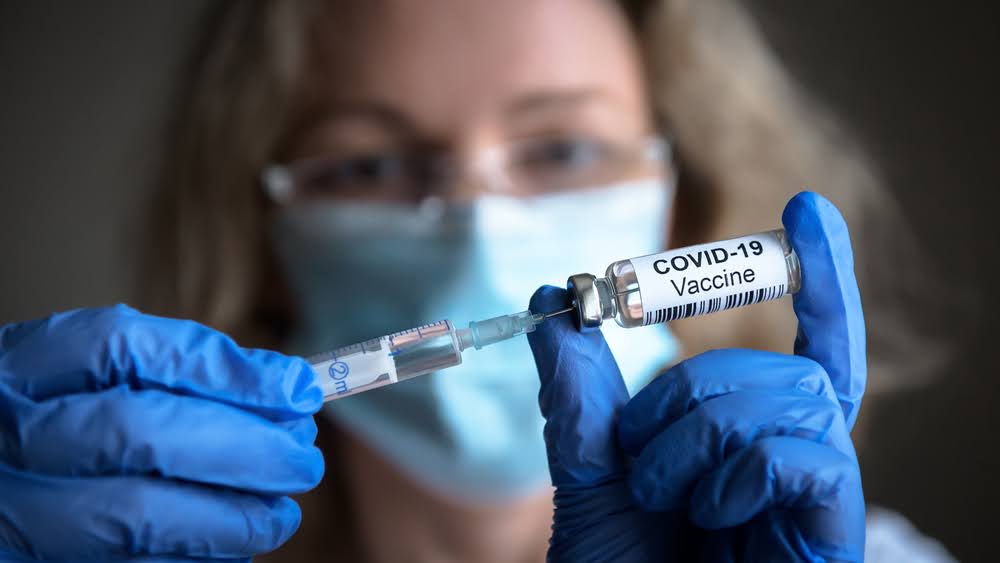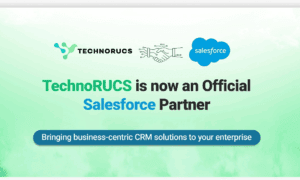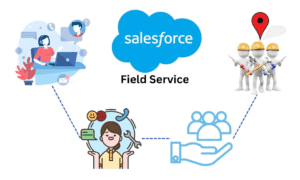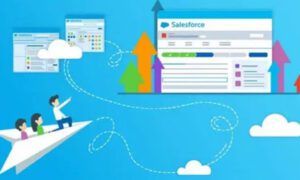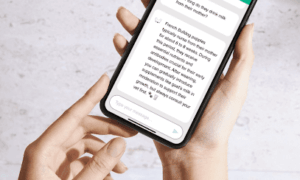When COVID-19 hit, the need for mass vaccination became urgent. Governments and healthcare systems were suddenly facing huge challenges—coordinating billions of doses, ensuring fair distribution, and tackling logistical hurdles. Add outdated systems and vaccine hesitancy into the mix, and the task seemed even more daunting.
Salesforce responded to these challenges with Vaccine Cloud, a cutting-edge platform designed to streamline vaccine administration. It helped manage complex logistics and ensured vaccines reached the right people, in the right places, at the right time.
In my role as a Senior Technical Architect at Salesforce, I was deeply involved in the creation of Vaccine Cloud. In this post, I’ll break down how this technology helped solve the logistical challenges of vaccine distribution and made a global impact in record time.
Vaccine Rollout Challenges
Many states faced significant challenges in their COVID-19 vaccine distribution efforts, including:
Geographic Disparities
About 20% of Americans live in rural areas with limited healthcare access. Reaching rural areas with limited infrastructure required creative solutions, like mobile vaccination clinics, to ensure everyone had access to the vaccine.
Vulnerable Populations
Prioritizing high-risk groups, such as the elderly and frontline workers, while ensuring fairness and equitable access for all, was a constant balancing act. In the US, a big percentage of COVID-19 deaths were among people aged 65 and older.
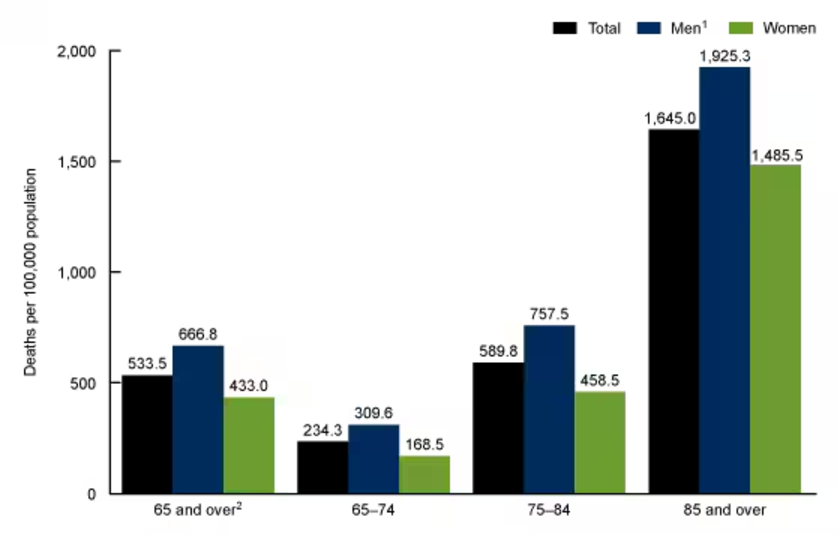
Source: Centers for Disease Control and Prevention
Real-Time Adjustments
With fluctuating vaccine supply and demand, systems had to adapt quickly—adjusting appointments, reallocating resources, and making real-time decisions to stay on track.
The overarching goal was clear: to vaccinate as many people as possible, as quickly as possible, and to do so in a way that was efficient, transparent, and equitable.
The Role of Salesforce Vaccine Cloud in Public Health Innovation
Salesforce, traditionally known for its customer relationship management (CRM) software, made a strategic pivot during the pandemic to develop Salesforce Vaccine Cloud—a specialized solution designed to manage vaccine distribution.
This cloud-based platform streamlined the vaccination process from appointment scheduling to inventory tracking, and real-time data reporting, empowering governments and healthcare providers to respond quickly and efficiently to the urgent demands of the COVID-19 vaccine rollout.

Image Source: Salesforce
Key features of the platform include:
- Patient Registration and Scheduling: A seamless experience for patients to book vaccination appointments online or through call centers, with the system automatically adjusting for availability based on demographics and medical needs.
- Real-Time Data Reporting: Integrated data feeds provide up-to-date insights on vaccine distribution, inventory levels, and progress, enabling decision-makers to take action based on the latest information.
- Scalability: Designed to scale effortlessly, Salesforce Vaccine Cloud can accommodate both densely populated urban areas and remote, underserved regions, ensuring equitable access for all.
Salesforce Vaccine Cloud Implementation
To address the challenges of mass COVID-19 vaccination, many states adopted customized Salesforce platforms, with CDR HealthPro™, vax4nyc, and vax4nv being some of the most notable.
Built on Salesforce, these systems helped manage vaccine registration, scheduling, and distribution, and have been used to support over 2 million residents in Florida. They also made scheduling 1 million appointments in New York city and the state of Florida seamless.
Here’s how the cloud solution emerged as a key tool in streamlining the entire vaccination process:
System Integration
Integrating a new platform with existing health systems posed a significant challenge. The customized Salesforce platform connected seamlessly with various state agencies, synchronizing real-time data on vaccine inventory, appointment scheduling, and distribution tracking. This integration consolidated critical information, reducing silos and providing health departments with a unified view of the vaccination process.
Scheduling and Registration
With vaccination demand peaking, the platform automated appointment scheduling, streamlining the process for residents. The system allowed individuals to register through multiple channels, including online portals, call centers, and local health providers. Priority was given to high-risk groups like seniors and frontline workers, ensuring they received timely access to the vaccine. The system could handle over 30,000 appointments per day, while automated reminders minimized no-shows and kept the process running smoothly.
Ensuring Equitable Access
Equity played a central role in the vaccine rollout. The Salesforce platform provided in-depth data analytics to pinpoint underserved communities, such as rural areas, and ensure that resources were allocated where they were needed most. Mobile units and pop-up clinics were deployed to reach vulnerable populations, with real-time data allowing for rapid adjustments to outreach efforts as necessary.
Real-Time Data and Reporting
Real-time vaccine tracking was crucial to effective distribution. The platform offered transparent reporting and live updates on vaccine availability and usage, allowing health officials to shift resources quickly. These capabilities not only ensured smooth operations but also helped meet federal compliance standards by providing accurate and timely data for reporting purposes.
Key Vaccination Milestones of the Custom Salesforce Cloud Platform
The use of systems like CDR HealthPro™, vax4nv, and vax4nyc helped manage vaccine registration, scheduling, and data reporting, achieving remarkable efficiency in just a few months.
Here are some impressive results after implementing the custom Salesforce cloud platform, CDR HealthPro™, in Florida:
Metric |
Result |
| Total Vaccinations Administered | 1 million vaccines delivered across Florida |
| Daily Vaccination Capacity | Over 30,000 shots administered in a single day |
| Average Vaccination Time | Less than 30 minutes from check-in to release |
| Counties Served | 49 counties, including Hillsborough, Pinellas, Orange, Pasco, and Hernando Counties |
More Salesforce Success Stories in COVID-19 Vaccine Distribution
Salesforce Vaccine Cloud has been pivotal in transforming the way vaccine distribution is managed across the country.
From the rural stretches of Kentucky to the busy suburbs of Illinois, public health departments and healthcare organizations have leveraged Salesforce’s cloud-based solutions to streamline processes, improve access for underserved populations, and ensure that vaccination data is accurate and up-to-date.
Below are two notable success stories from Louisville, Kentucky, and Lake County, Illinois, where Salesforce played a crucial role in overcoming the logistical challenges of large-scale vaccine distribution.
How Louisville Metro Public Health Efficiently Distributed COVID-19 Vaccines with LouVax
Louisville Metro Public Health and Wellness (LMPHW) faced several key challenges in vaccinating its diverse population of over 617,000 people. These challenges included:
- Vulnerable Populations: Louisville’s population includes both urban and rural areas, with significant numbers of underserved and high-risk individuals who needed priority access to the vaccine.
- Coordination Across Multiple Communities: The city had to manage vaccine distribution across diverse neighborhoods, ensuring equitable access to the vaccine for all residents.
- Tracking and Compliance: With strict state and federal reporting requirements, LMPHW needed a system that could streamline the vaccination process while remaining fully compliant with government standards.
The solution: LMPHW implemented LouVax, a cloud-based vaccine management system built on Salesforce Government Cloud. LouVax streamlined the entire vaccination process, from registration to follow-up appointments, while ensuring real-time reporting and seamless integration with state and federal systems.
How Lake County Health Department Streamlined COVID-19 Vaccine Distribution with the AllVax Portal
The Lake County Health Department (LCHD) in Illinois also faced a set of unique challenges as it worked to vaccinate over 700,000 residents, including commuters and visitors from neighboring areas. Their specific challenges included:
- Geographical Complexity: Lake County’s residents often cross county lines for work or services, complicating vaccine distribution efforts and requiring a broader, more flexible approach.
- Ensuring Equitable Access: In addition to residents, LCHD needed to ensure that essential workers and visitors were also vaccinated, especially those with limited access to healthcare.
- Real-Time Coordination: LCHD required a solution that could integrate real-time data from multiple sources, allowing for effective tracking, scheduling, and communication with a large, diverse population.
The solution: LCHD utilized the AllVax portal, a solution built on Salesforce’s Customer 360 Platform for Government. This platform simplified the registration and scheduling process, integrated data across various sources, and enabled real-time communication and tracking to ensure equitable vaccine distribution.
Quick Glance at Key Results from LouVax and AllVax
Overview |
LouVax (Louisville, KY) |
AllVax (Lake County, IL) |
| Population Served | 617,000+ (including urban and rural areas, underserved communities) | 700,000+ (including commuters and visitors across county lines) |
| Key Features | Online registration, appointment scheduling, QR code check-in, real-time reporting integration | Integrated registration, real-time communication, tracking of essential workers and pre-existing conditions |
| Impact | Over 50,000 people vaccinated in the first weeks, 16,000+ educators | Over 200,000 registered within 8 weeks, equitable distribution tracking |
Takeaways on the Role of Technology in Public Health Emergency Response
The COVID-19 pandemic showed us just how crucial technology can be in overcoming the massive logistical challenges that come with public health emergencies.
Looking at the vaccine rollout in places like Florida, Louisville, and Lake County, we can see exactly how technology stepped up to the plate and helped make these monumental tasks a little more manageable.
The key takeaways from these efforts are a wake-up call for what’s possible when the right tech is in place to support our public health systems.
Technology Lets You Scale Fast and Adapt Quickly
When things move at lightning speed—like they did with the vaccine rollout—technology becomes the backbone of operations. Platforms like Salesforce Vaccine Cloud helped public health departments scale up quickly, even when demand for vaccines soared.
These cloud-based systems can grow and change as needed, making sure that resources are allocated efficiently and the process never grinds to a halt. When you’re dealing with huge numbers of people, having a system that can keep up is non-negotiable.
Real-Time Data is a Game-Changer
Imagine trying to make decisions in the middle of a crisis with outdated or incomplete information—that’s where technology really shines. By integrating with federal and state reporting systems, these vaccine management platforms allowed for real-time updates that informed decisions instantly.
This wasn’t just about tracking vaccines; it was about making sure every move was calculated, resources were used wisely, and strategies could be adjusted on the fly. In an emergency, being able to respond quickly based on current data is everything.
Technology Helps You Be Fair and Equitable
One of the biggest challenges in vaccine distribution was making sure that underserved communities weren’t left behind. Thankfully, tech made it possible to track where vaccines were most needed, ensuring that vulnerable groups got the shots first.
This was all about using data to direct attention where it was needed most—whether that was focusing on rural areas or targeting high-risk populations. Technology gave health officials the ability to tackle inequality head-on and ensure fair access for all.
Communication Made Simple = Better Results
Getting people vaccinated wasn’t just about logistics—it was about making sure everyone knew exactly what to do and when. Technology made appointment scheduling, reminders, and on-site check-ins easier than ever.
People could get notified about their appointments, get the information they needed, and show up with minimal confusion. When public health systems communicate clearly, people are more likely to stick to their appointments, and things run smoother. It’s a simple but powerful way to ensure success.
Conclusion
The COVID-19 vaccine rollout underscored the transformative power of technology in times of crisis. Platforms like Salesforce Vaccine Cloud provided more than just scheduling tools.
They offered real-time data, seamless coordination, and the ability to pivot quickly as conditions changed. These systems prioritized equity, ensuring underserved communities received the attention they needed.
The real lesson? Public health solutions must be agile, scalable, and built to adapt under pressure. As we move forward, these innovations set a new standard for crisis management, offering hope that future challenges can be met with the same efficiency and fairness.

